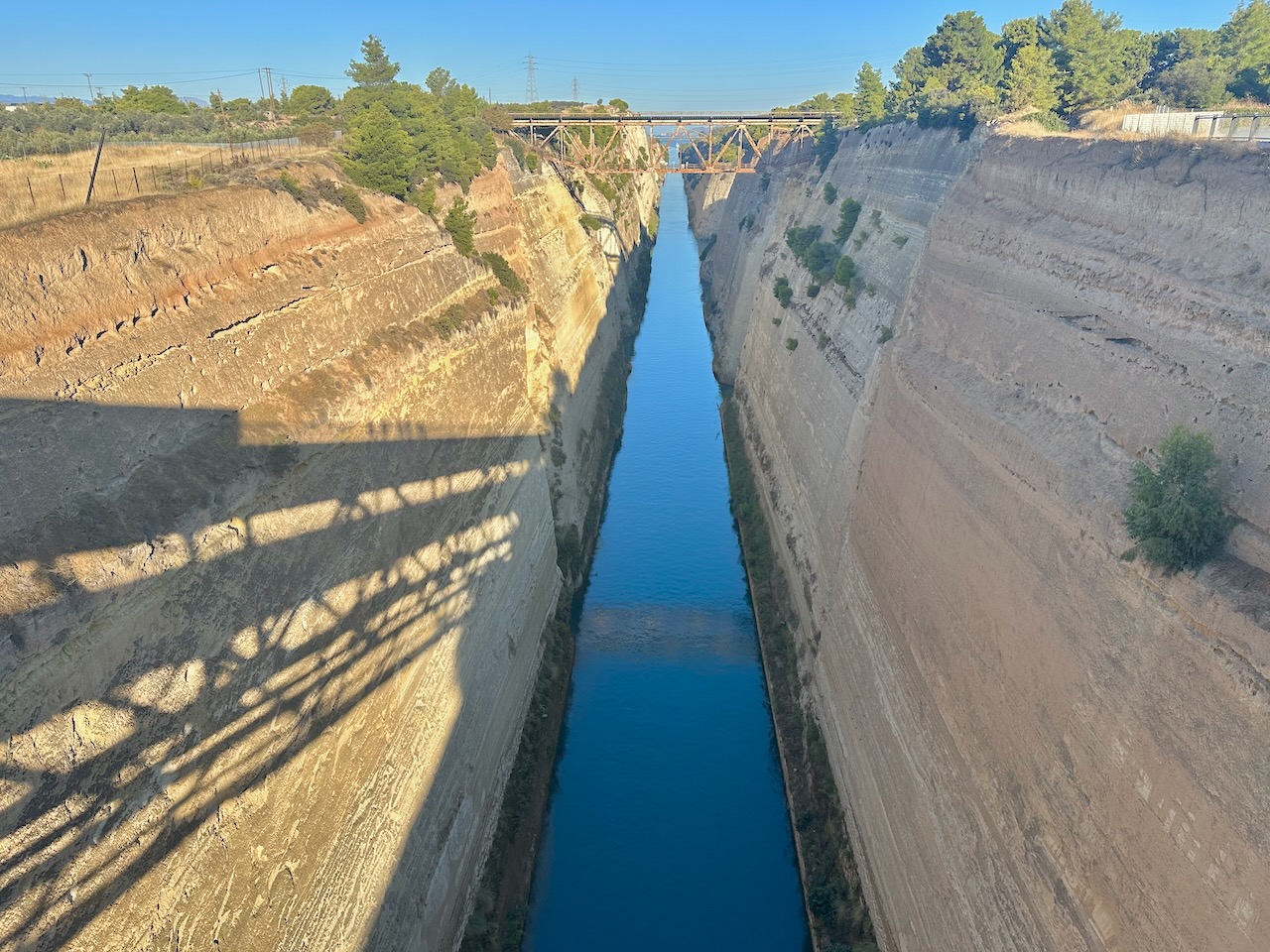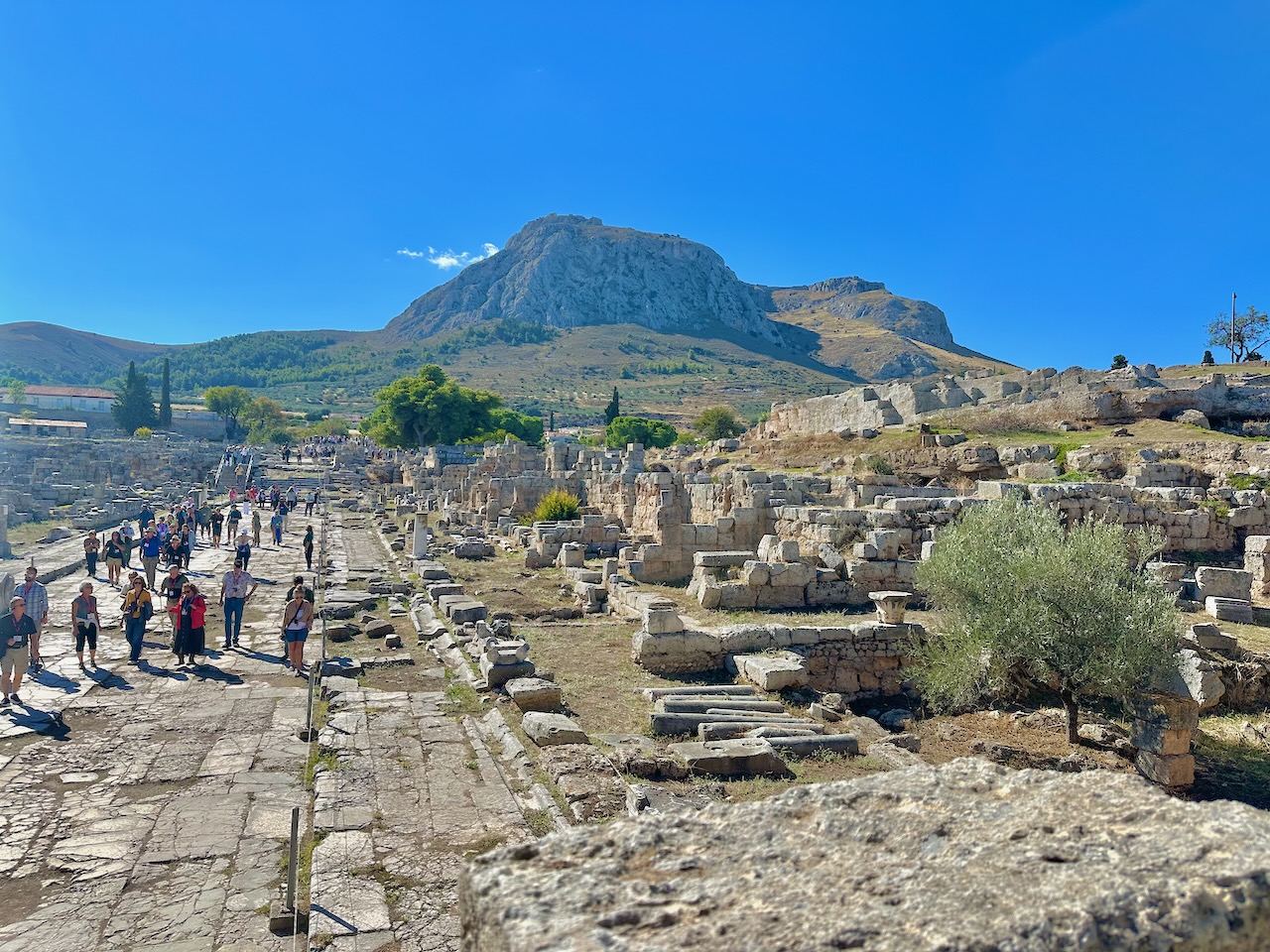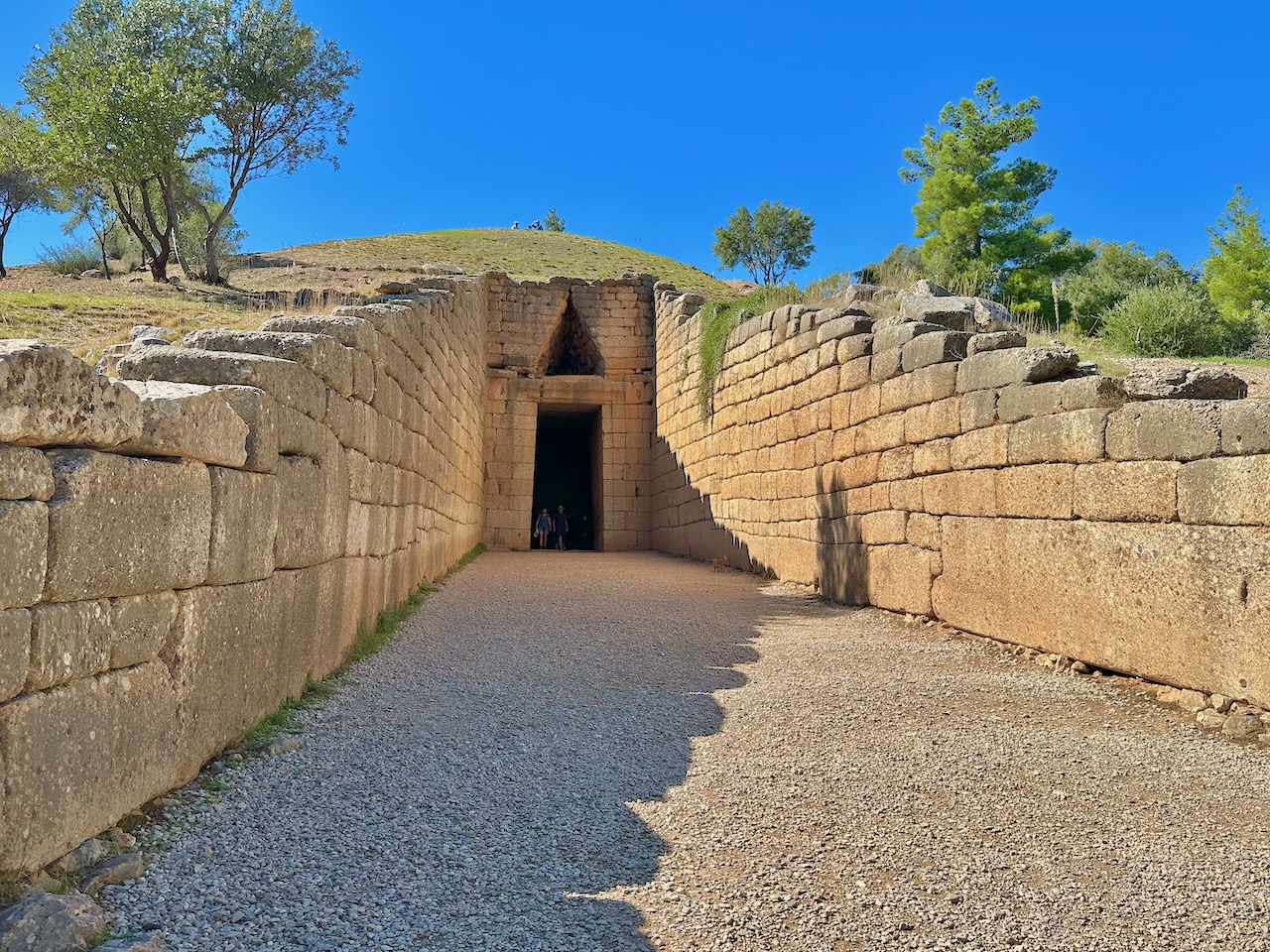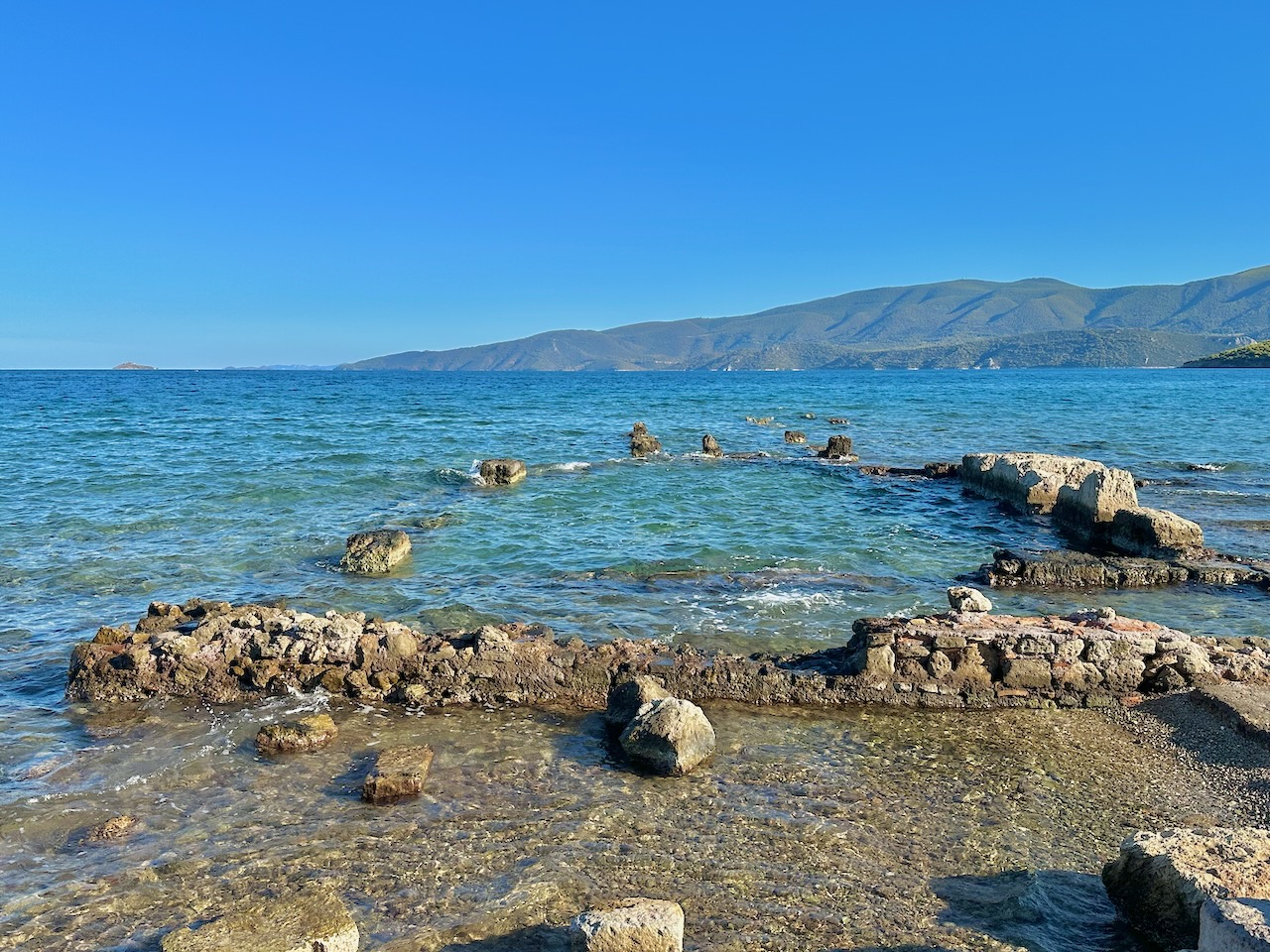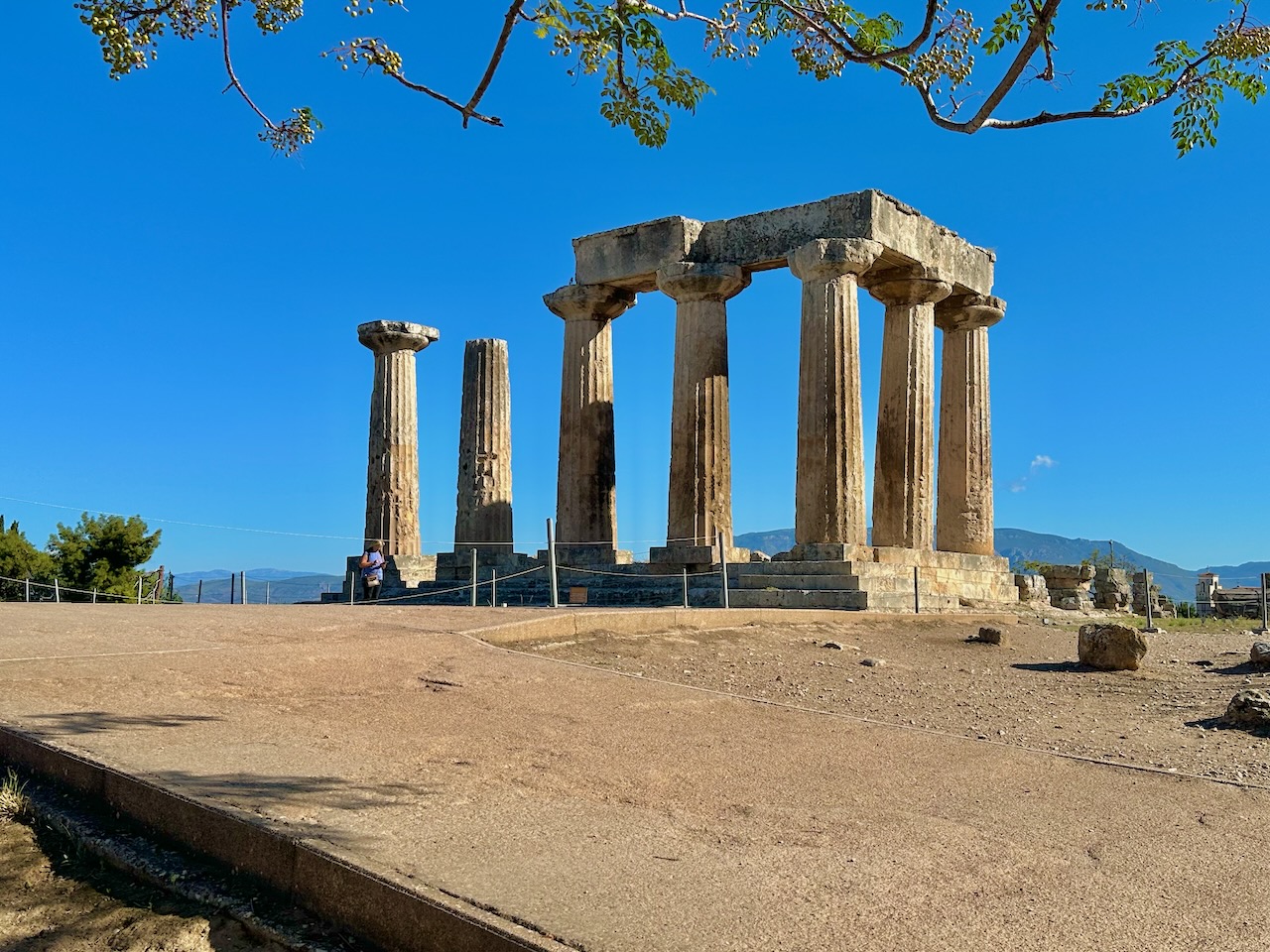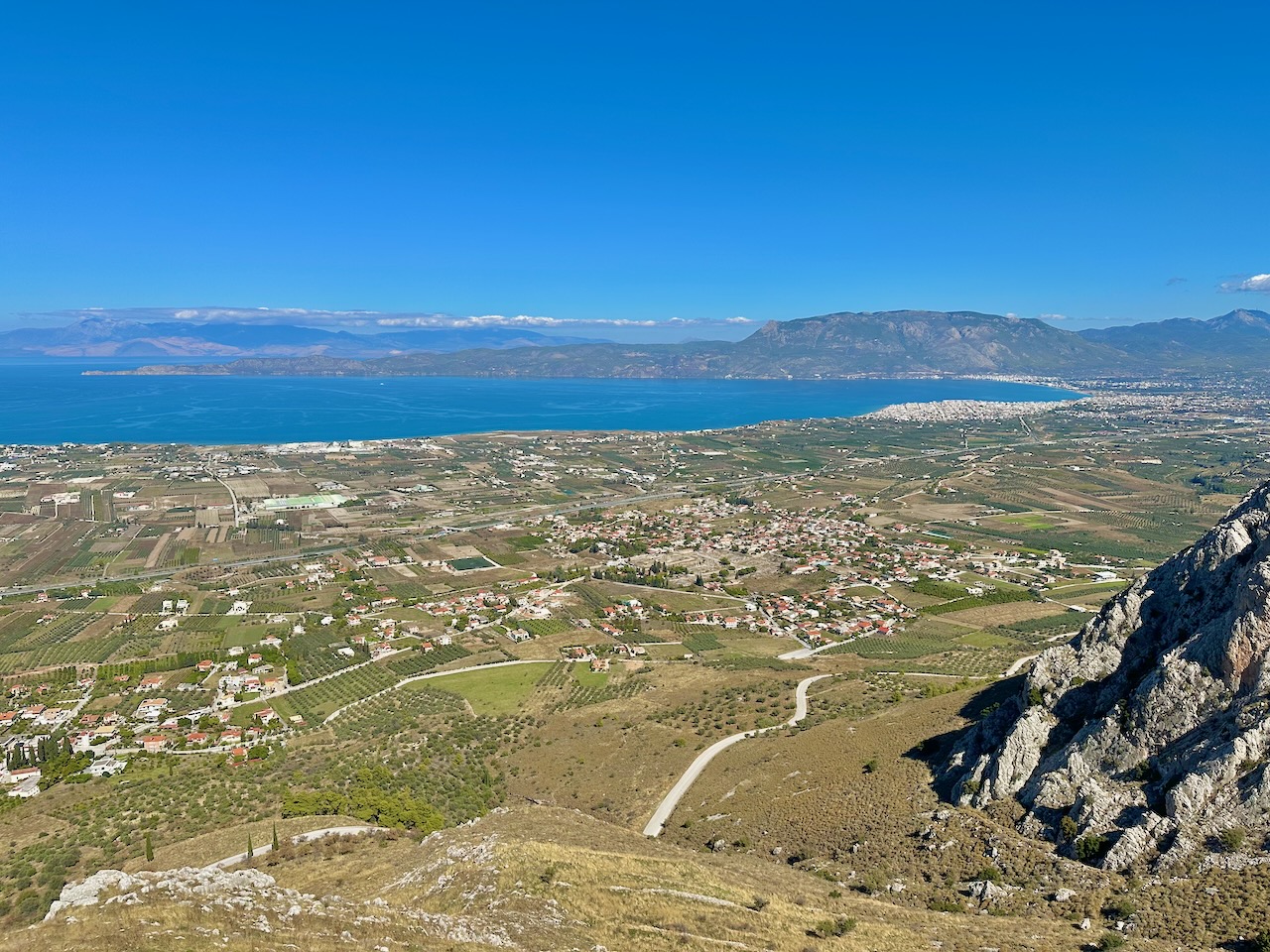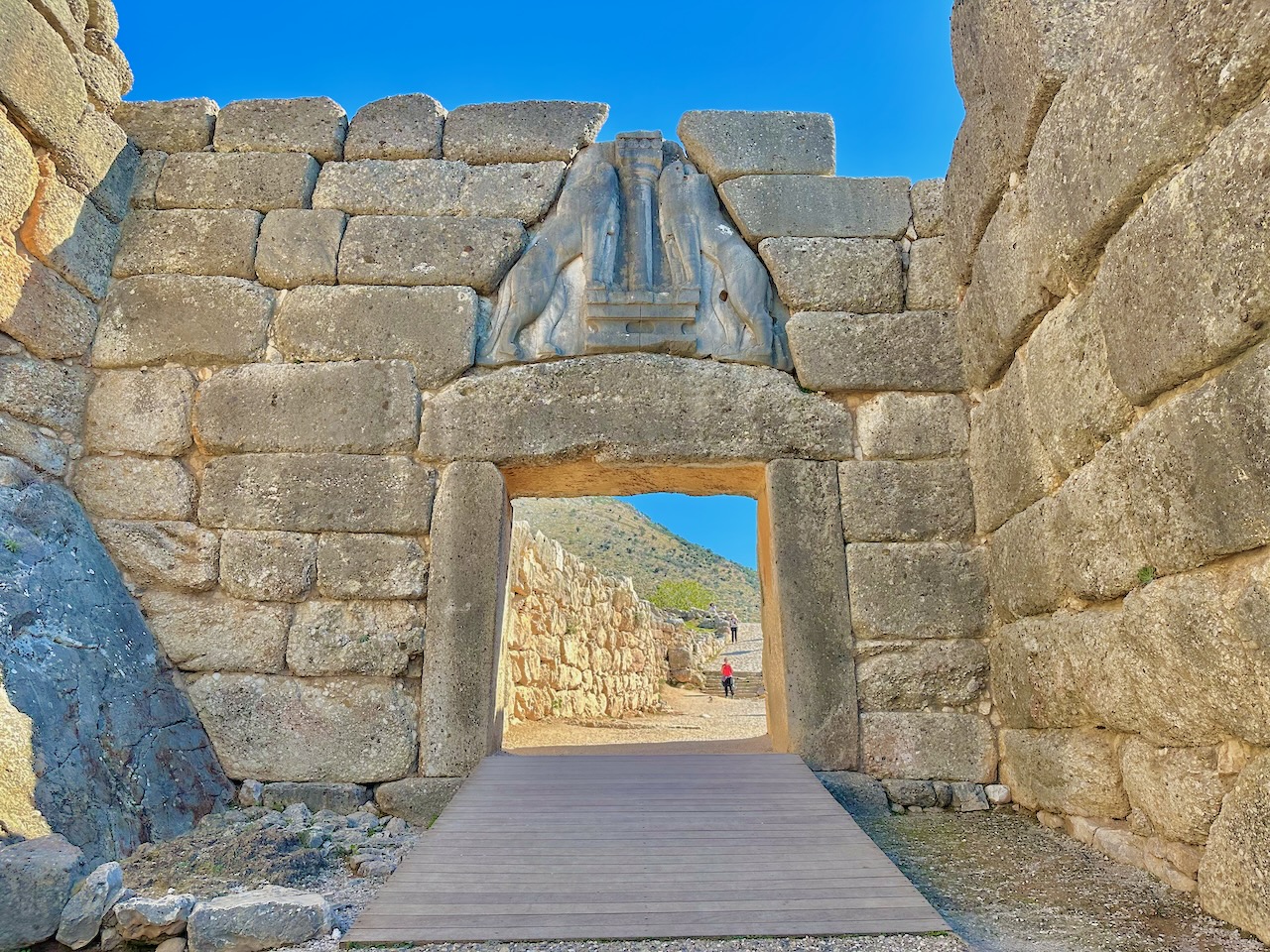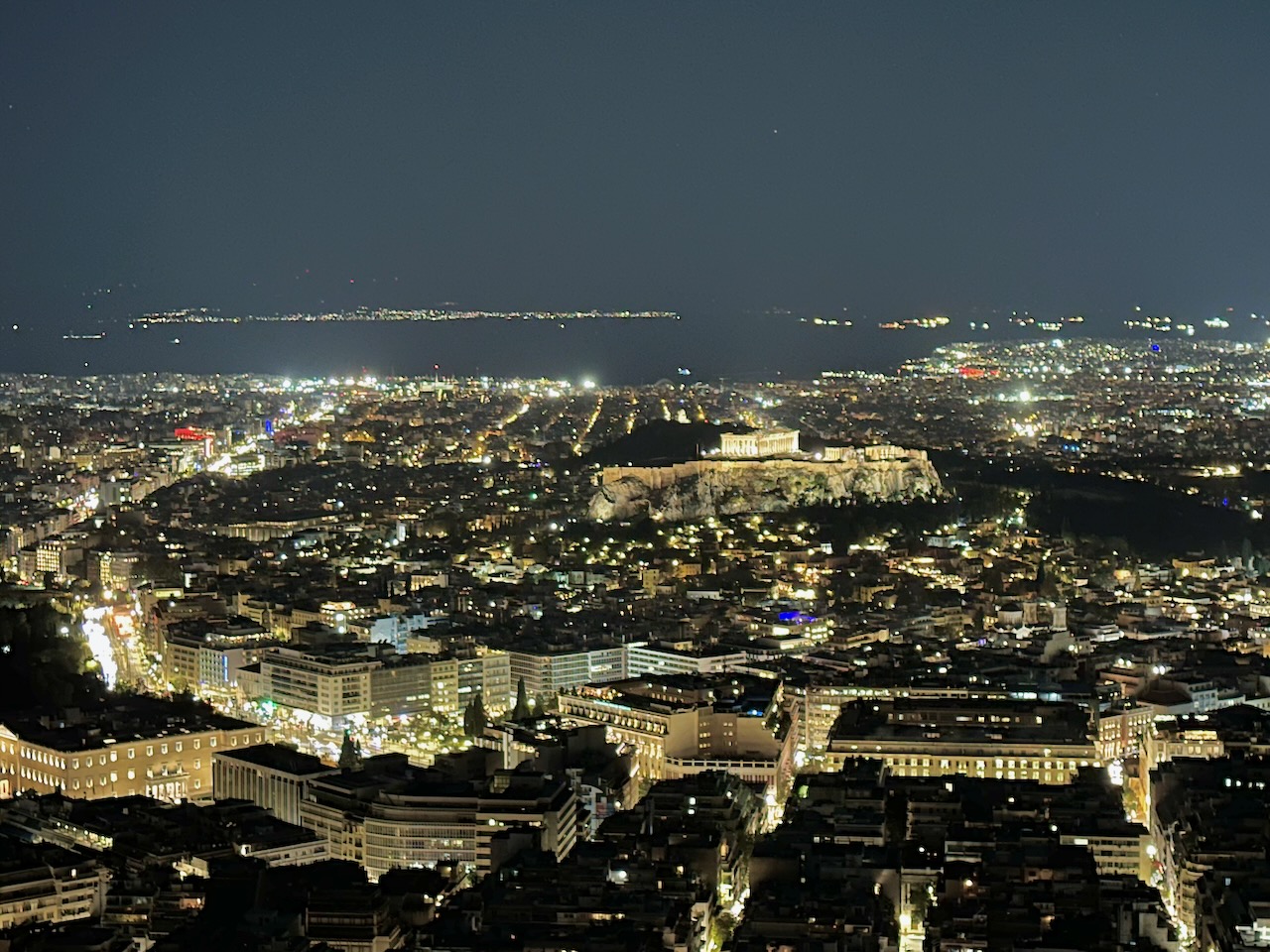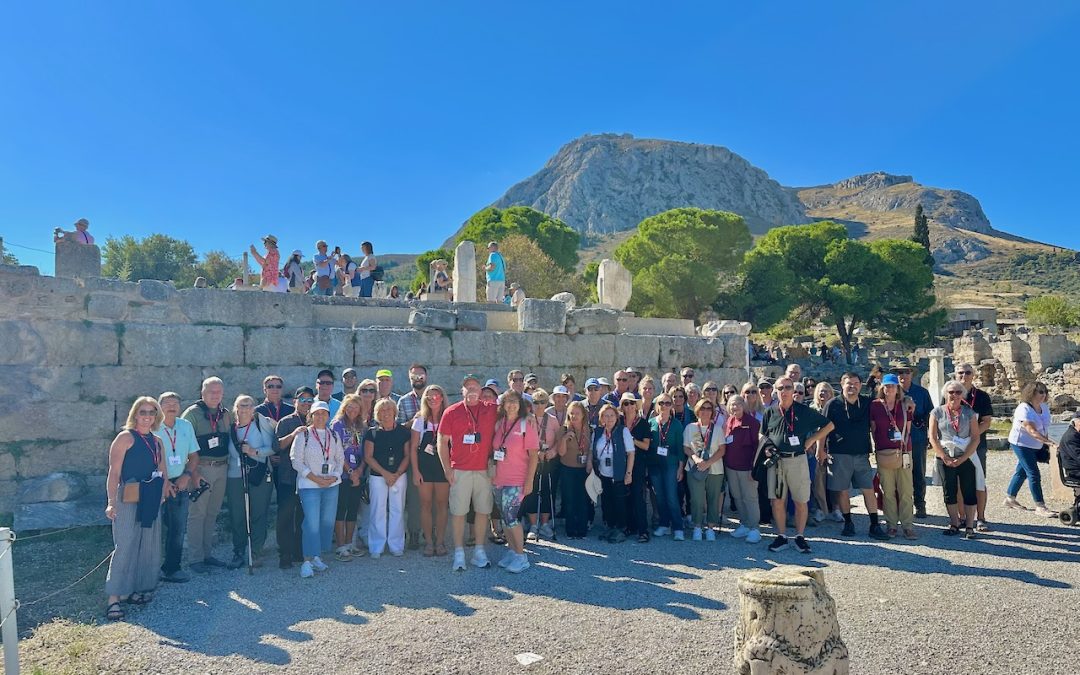Day 6 – Thursday: October 9: Corinth, Mycenae, Cenchreae, Athens
Today we traveled to the Peloponnese of Greece. We left the hotel at 7:30 again following breakfast. The weather was perfect, with partly sunny skies, and temps around 70. We read portions of 1 Corinthians 4 and 2 Corinthians 5 as we left the hotel.
Corinthian Canal
We drove south from the hotel to the Peloponnese of Greece. Our first stop was at the famous Corinthian Canel. It was built over a 11 year span (1882-1893) and is 3.8 miles long, 75-85 feet wide (the width varies at each ends), 280 feet deep, with the water level around 26 feet. It is really a quite incredible engineering feat! We saw a few boats sail through also!
Ancient Corinth
We then traveled another 15 minutes to the ancient site of ancient Corinth. We first walked down to the area of the theater where we saw the important Erastus Inscription (he donated his own money for the public works, see Romans 16:23). Erastus is also mentioned in Acts 20 and 2 Timothy 4.
At the archaeological site, we began in the small museum. Here, we saw an image of the Menorah and many clay sculptures of the body parts represented (dedicated to Asclepius, also see 1 Corinthians 12). Among the ruins we saw the Temple of Apollo (one of 14 total pagan temples), the forum (agora in Greek), and the bema (or judgement seat) where Paul shared his defense/testimony before Gallio (see Acts 18). Paul was here for a year and a half during his 2nd mission journey. From here he wrote letters to the Thessalonica church in the north. During his brief stay here at the end of his 3rd mission journey, we wrote Romans. It was delivered by Phoebe (Romans 16).
After lunch in the public square of Corinth (many had gyros!), Before leaving the area of Corinth, we drove up to the Acropolis for a peak of the Temple of Aphrodite and a spectacular view of the plain of Corinth 1800 feet below. The massive walls and gates date primarily from between the the time of the Crusaders, Ottomans, and Venetians. However, the lower coarses of wall go back to the Greek and Roman periods. Many made the climb to an incredible viewpoint of the plain and port of Corinth below.
“It was another day of connecting with Paul’s ministry and mission. The day took us south to Corinth. This was a very large city when Paul was here! He spent 18 months at this city, continuing to share the Good News of the Gospel!”
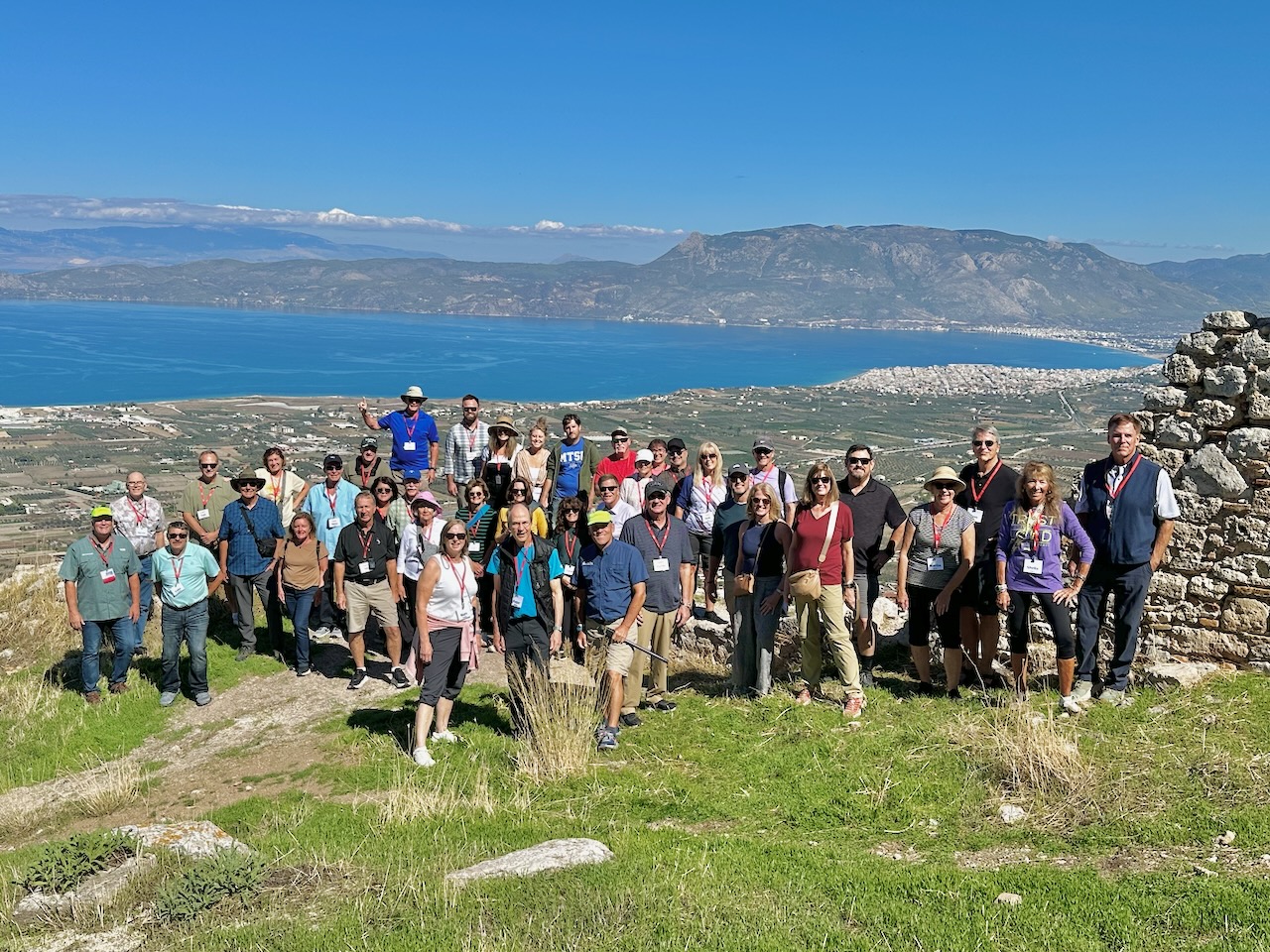
Mycenae
From here we drove about 30 minutes to Mycenae. Much of what we saw dates from 1,350 – 1,200 BC. Entering the site, we walked under the famous Lion’s Gate (1,200 BC). We also saw the shaft tombs (where over 30 pounds of gold was found in the 1870s excavations, including the famous golden masks), the palace area, and the cistern. We also saw the Bee Hive tomb of Atreus, the father of King Agamemnon (also called the Treasury of Atreus). We enjoyed singing the Doxology and Amazing Grace in the tomb. We sounded like a heavenly choir. 🙂
Cenchrea
Leaving Mycenae, we started our way back to our hotel in Athens. But before leaving the area of Corinth we made a brief stop at Cenchreae (Acts 18) on the way. This was the harbor Paul used to sail to Ephesus and eventually back to Caesarea. Here Paul cut his hair because of the Nazarite vow he had made (Numbers 6:18). Phoebe also served the church established here (Romans 16:1). We then drove back the rest of the way to the hotel, arriving for dinner.
Mt. Lycabetus
Following dinner at the hotel, some (11) in the group walked to the top of a highest hill in Athens called Lycabetus. The view was incredible from here offering a panoramic view of all of Athens. This includes seeing the Acropolis and the port of Piraeus! We all walked back to the hotel and back to our rooms to retire for the evening. We are all looking forward to the start of our 3-day cruise tomorrow morning.
Day 7 – Friday, October 10: Athens, Embark on 3-Night Cruise, Island of Mykonos
